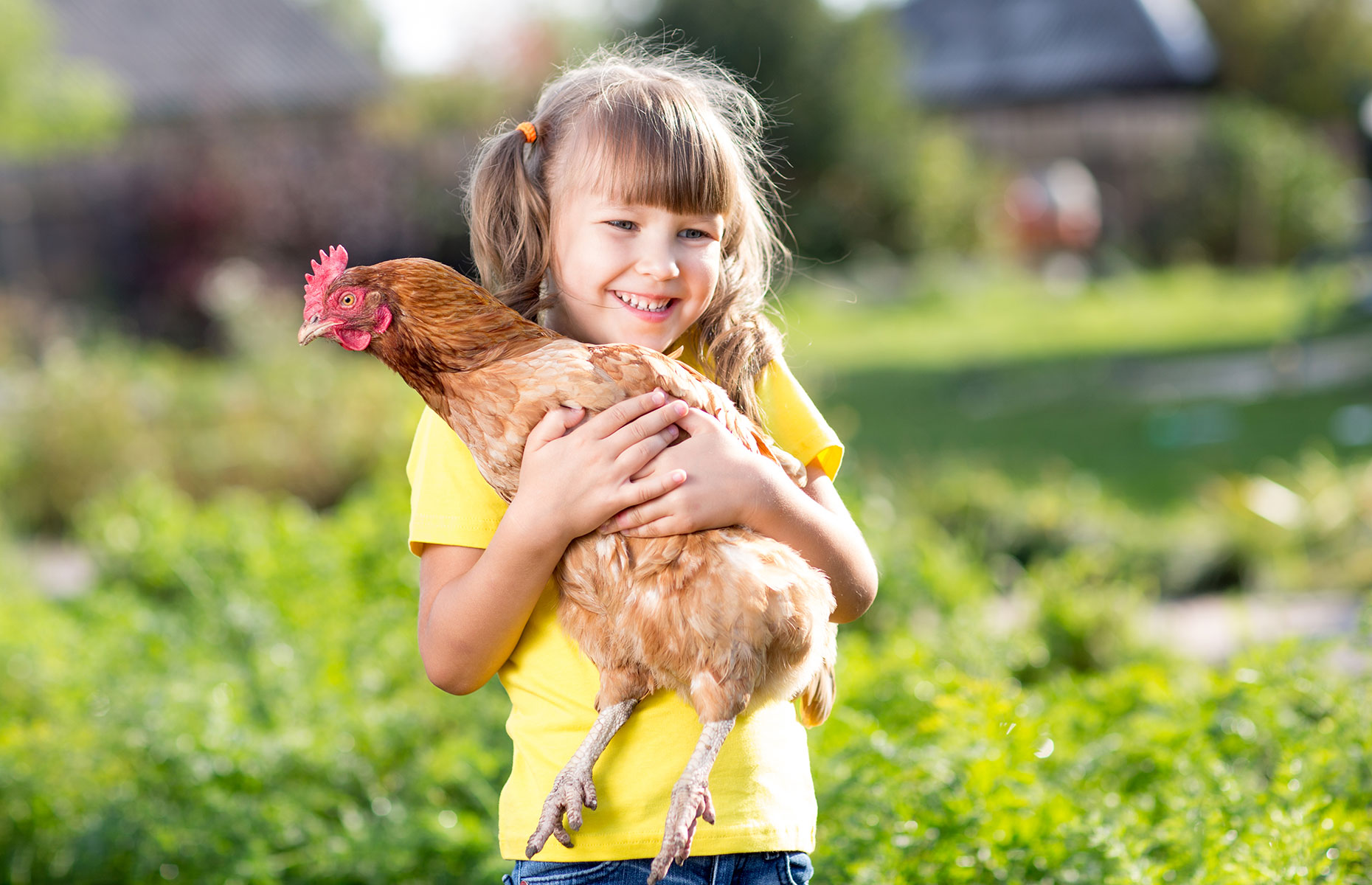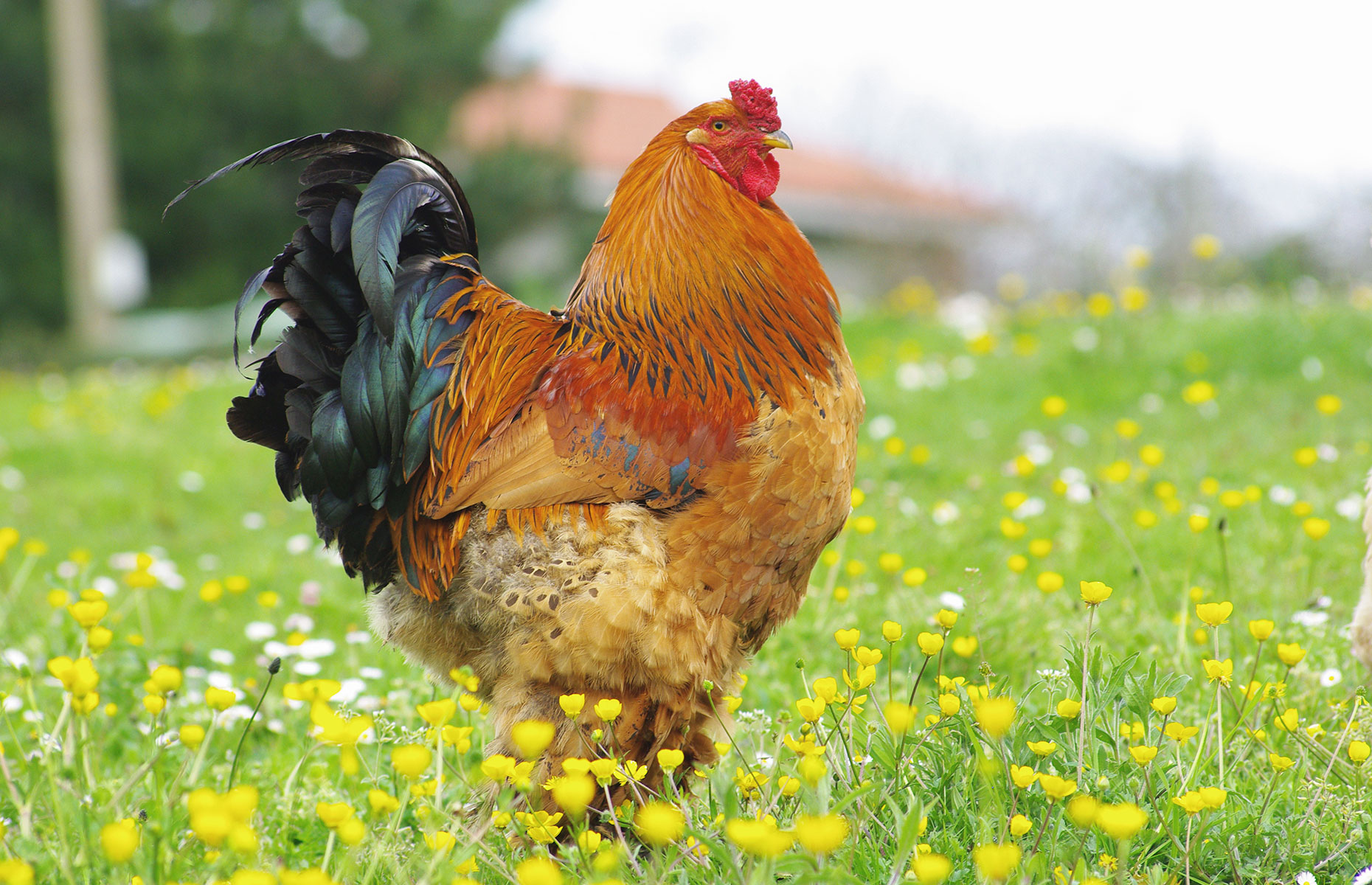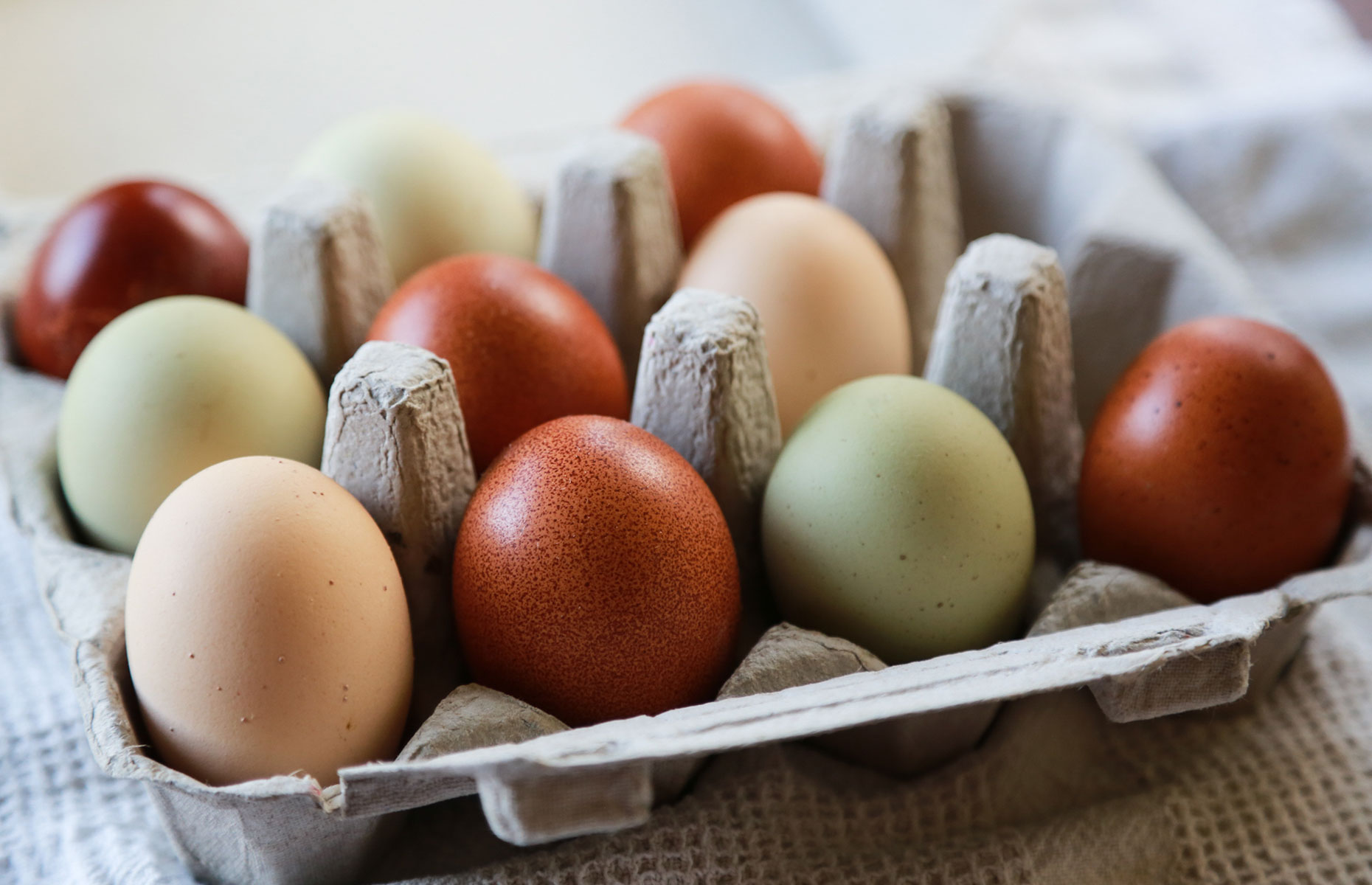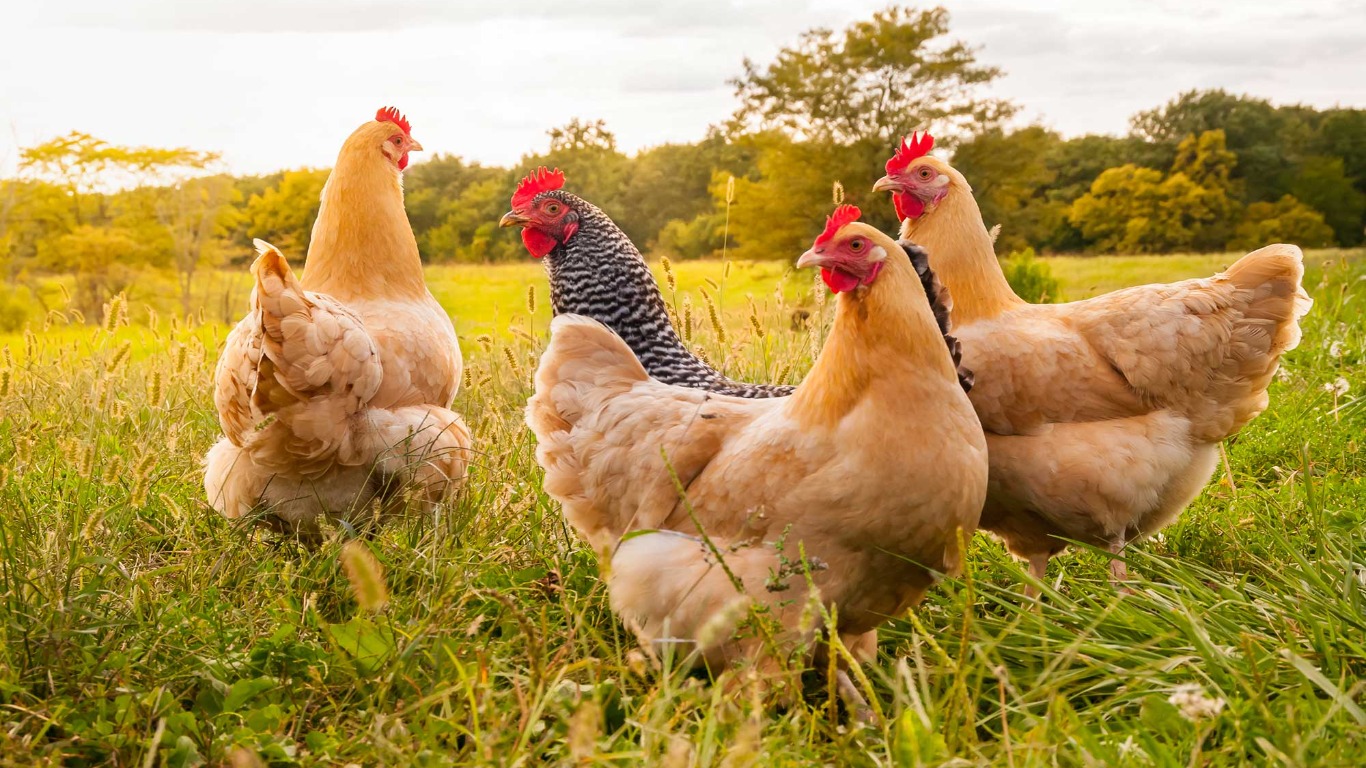How to keep chickens at home
It's estimated there are over five million chickens being kept in homes across the UK and it's a number that's rising every year – not surprising given the renewed focus on where our food comes from and being more self-sufficient post-coronavirus. With so many things to consider when caring for animals, raising a flock for the first time can seem intimidating. But with the right starting point, caring for new chickens becomes a whole lot easier. Our expert Chris Lesley offers a beginners' guide that answers the most common questions.
What's the appeal?
Chickens are a wonderful investment. Many people choose to keep chickens as a source of fresh eggs, or to process into poultry once they’ve matured, or sometimes both. Raising chickens as a food source in this way can save a lot of money and a lot of trips to the store. Egg production will continue for years, which will outweigh the costs of raising them and makes chickens a very sustainable food option, especially if they are free-range.

There are many other benefits to keeping chickens that can get overlooked, though. For instance, chickens are great for families with kids. Allowing kids to take part in feeding, watering, and looking after the chickens is a great hands-on learning experience and teaches responsibility.
Not only that, many breeds of chickens are extremely docile and friendly, so children can pet them and hold them safely. Some extremely friendly chickens are raised solely as pets, and not as a food source at all.
How much space is needed?
Space requirements will change slightly depending on the breed, but a general rule of thumb for standard size chickens is to provide four square feet (0.3sqm) of space in the coop and eight to 10 square feet (0.7 to 0.9sqm) in the pen or run per chicken.
Some larger breeds will require even more space. For instance the Brahma chicken (pictured below) needs five to six square feet (0.4 to 0.5m) of space in the coop and 12 to 14 feet (1.1 to 1.3m) in the pen.

Some additional space considerations are perches and nesting boxes. Most chickens need eight to 10 inches (20 to 26cm) of space for roosting, and 12 x 12 inch (31 x 31cm) nesting boxes.
Even Brahmas will fit in 12 x 12 inch nesting boxes, however 14 x 14 inch (36 x 36cm) boxes are a better fit.
When setting up a coop there are several things to consider.
First, ensure it is positioned somewhere that the neighbours will not be disturbed. Building the coop next to shrubs or fences is a great idea, since they will absorb or deflect some of the noise from chickens.

Second, there are certain types of gardens that are not suited for chickens. Rhubarb, potato leaves, and avocado plants are all toxic to chickens, so the coop should not be set up anywhere near a garden that contains these plants.
What gear is required to get started?
Chickens will need more than a coop to survive and thrive. Some gear to invest includes:
- Feeders and waterers: there should be one feeder and waterer for eight hens.
- Nesting boxes: one nesting box can be shared by three hens.
- Perches: these can be homemade with a 2 x 4 inch (5 x 10cm) piece of wood. You can use a naturally rot-resistant wood like cedar for this.
- Maintenance equipment: this includes anything used to run the coop on the daily, from clean bedding to electrical wiring.
- Fencing: even for large chickens like the Brahma, a two to three-foot fence will do.
It’s important to take precautions against pests and predators too. The fencing should be placed eight inches (20cm) into the ground so that predators cannot dig it up and it should also cover the roof of the coop. If predators like foxes are common, an electric fence may be necessary. Predators are more active at night, so it’s also important to lock all of the chickens inside the coop from dusk until the rooster crows. This can be done manually, or with an automatic door opener.
Where can you buy chickens?
When buying chickens, it is critical to buy ethically raised animals.
For new owners, it’s hard to know where to even start looking, let alone to figure out if the chickens were raised ethically. A good way to tell if a hatchery is trustworthy is by the cost of the chickens. Reputable hatcheries will generally sell six hatching eggs for £40 ($52) or pullets – a young hen that's not yet started laying – for £20 ($25) each. If the prices are much lower than that, there is a good chance that the chickens were not raised ethically, or some proper care was sacrificed to lower the price.
Saving money when buying chickens is nice at first, but it is more expensive in the long run because of health issues in the flock. Always research the seller before buying chickens, either by searching online for reviews, asking a friend who has experience raising chickens or, if you're after a pedigree bird, attending a breader show.
Store-bought v backyard eggs: what’s the difference?
Store-bought eggs are generally the same from carton to carton. When raising backyard chickens, there is much more variety, both in colour and flavour, and the raising different breeds of chickens will lead to different results...

- Some breeds that lay white eggs are: Leghorns, Anconas, Andalusians, Buttercups and Catalanas
- Some breeds that lay brown eggs are: Welsummers, Barnevelders, Rhode Island Reds, Basque, Jersey Giants and Orpingtons. The shade of brown varies by breed, and gets lighter later in the season.
- Some breeds that lay blue eggs are: Cream Legbars, Ameraucanas, and Easter Eggers.
Eggs can also be green, pink, or purple.
Disease, stress, age, and overfeeding can all limit egg production. Look out for yellow faeces, penguin stance when laying, and discolouration of the eggshells. To ensure proper laying, make sure the hens are not overfed, are receiving enough calcium and are getting plenty of daylight.
Your questions answered
How long do chickens live? High production chickens generally do not live as long as lower production birds. Higher production birds will live for about five years, while lower production birds can live over eight years.
How should illnesses be handled? Many illnesses require taking the sick chicken to the vet. Most local veterinarians are not trained to deal with livestock animals, so it is important to find a veterinarian who does. Some illnesses can be treated without a vet by changing diets, providing supplements, or getting rid of pest infestations. However, more serious illnesses like salpingitis (inflammation of the fallopian tubes), egg binding and egg yolk peritonitis should always be handled by a professional.

Should chickens be insured? While it is optional, pet insurance is available if needed. This can be a useful backup plan in the event of predation, disease, or the unexpected. However, it is best to be as prepared as possible for any challenges backyard chickens will present before buying.
Before buying chickens, know the benefits, have a breed in mind and what eggs they will produce, understand the space requirements, buy all necessary gear and equipment, and find a reputable seller. By considering these things, raising a backyard flock will be practical, rewarding, and fun!
Comments
Do you want to comment on this article? You need to be signed in for this feature
